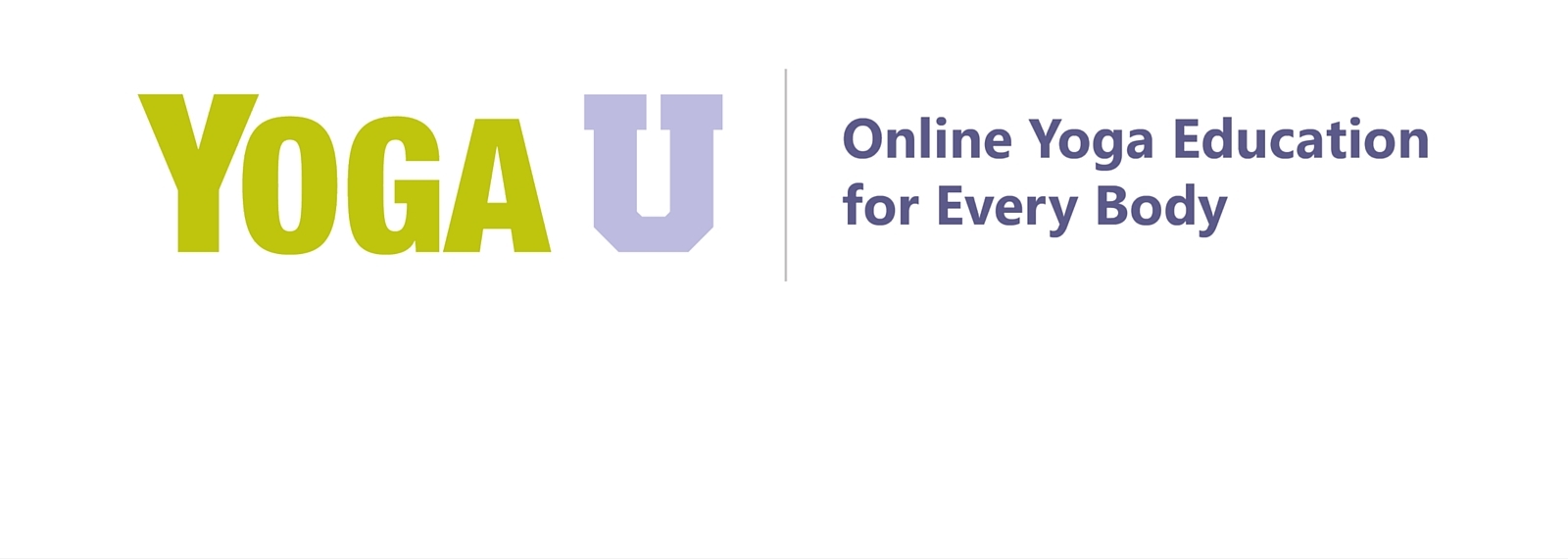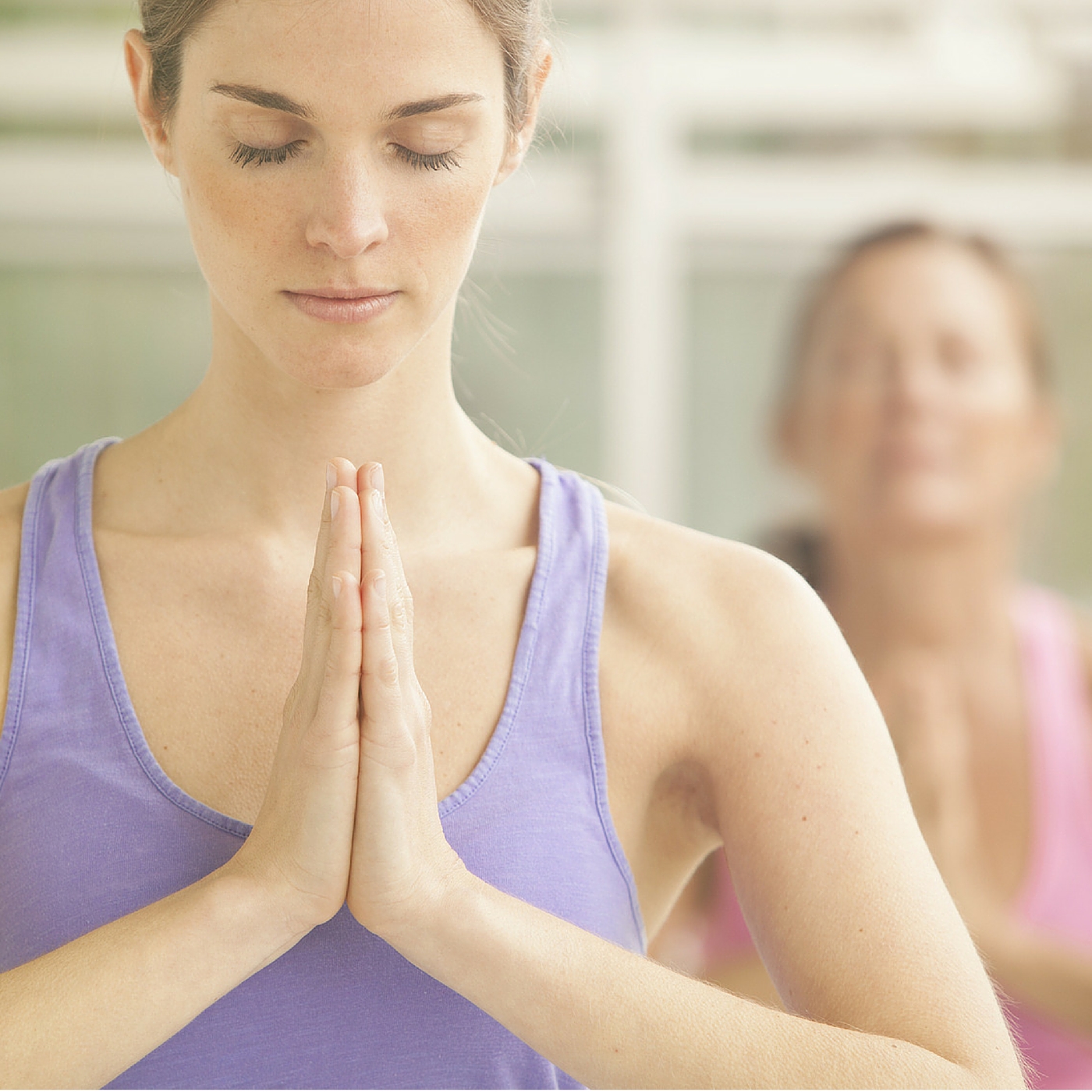Episodes

Thursday Jan 17, 2019
Thursday Jan 17, 2019
We live in a time when we are constantly exposed to both environmental toxins as well as the internal buildup of toxins from excessive stress or mental worry, notes Kristine Kaoverii Weber in this free download.
Both yoga and Ayurveda have a rich tradition of ways to facilitate natural detoxification notes Kristine. A central tenet of yogic wisdom is that for the body to function properly, we must support the body's inbuilt detoxification processes. A buildup of toxins - known in Ayurveda as ama - is thought to lie at the root of numerous diseases. Adding yoga routines and daily self care routines for proper cleansing is one of the most important tools we have available for supporting our longterm health and well-being.
However, we can't just think about detoxification on the level of the body, Kristine notes. The ancient yogis described us a multidimensional beings, and true detoxification must take place on all levels of mind and body. Kristine discusses detoxification in light of the five koshas - the multiple sheaths of our being - and gives examples of different techniques that will facilitate clearing out debris and letting go of thought patterns that don't serve us as part of purifying the extended mind-body.
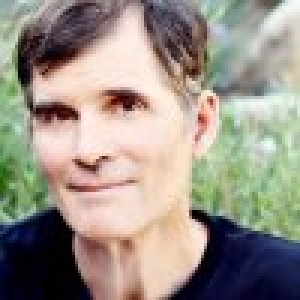
Saturday Jan 05, 2019
Saturday Jan 05, 2019
When we think about subtle yoga anatomy, usually the first thing that comes to mind are the chakras – the energy centers of the body. However, the body actually has numerous subtle aspects, says renowned yoga teacher Tias Little in this free download.
The subtle body doesn’t have to be something abstract, notes Tias. We can learn to sense aspects of subtle functions in yoga practice as we begin to sense how yoga poses affect our body and mind, e.g. the pathway of nerves through the fascia or the neurovascular changes that unfold in different yoga poses.
The whole idea of the subtle is used in many of the spiritual teachings as a guide towards the infinite or the spaciousness, says Tias. The ancient yogis knew that in order to contact this boundless awareness, one had to move very slowly and really attune to the most sensitive, vibratory rhythms that reverberate inside. The more one attunes to these subtle shifts in one’s own physiology, the more one can approach spirit.
A concept of subtle yoga anatomy that has a strong parallel in Western physiology, says Tias, is the yogic and Ayurvedic concept of the nadis. There are tens of thousands of nadis in the body; in fact, Hatha Yoga Pradipika describes 72,000 nadis, and some yogic texts describe even more.
In Western physiology, these channels are described as e.g. the blood arteries and veins, the lymphatic channels, and the nerves that transmit signals from the brain to all parts of the body. The nadis, from a yogic point of view, are really rivers of energy, which the ancient yogis mapped out in a very detailed way, notes Tias. Connecting to these little rivers throughout the body is something we do in the subtle body.
The biggest river to connect to is the river of the breath, says Tias. But underneath the breath, there are many, many layers. There are many pulses. There are many different rhythms that one can connect to. And the beauty of practicing yoga is starting to really sense some power and to sense and feel the aliveness of this pulsatory flow inside.
If the information flows freely through the Nadis, if the subtle energy flows through the Nadis, we enjoy good health. But when the nadis get clogged, it affects our health, as well as our mental and emotional well-being. This is particularly paralleled in the Western concept of the lymphatic system. The lymphatic system has a dual role. It functions both as a vehicle for the immune system as well as a system of detoxification. The lymphatic vessels remove waste products left over from the cellular environment and return them to the blood stream. As such, the lymphatic system is critical for our health and well-being.
It’s very much like keeping the plumbing in your house below your sink free, notes Tias. The lymphatic system is really all about purification. The yogis placed great emphasis on purification, and left us numerous practices to tone the lymphatic system. Tias further talks about how the lymphatic system is a sister system to the circulatory system, and why it’s so important to our overall health.
You may also enjoy Tias's course, Yoga for Lymphatic Health: Building Physical and Psychic Immunity.

Monday Dec 10, 2018
Monday Dec 10, 2018
It is said that an ounce of prevention is worth a pound of cure. When it comes to keeping the back healthy and avoid back pain, this is particularly true.
The problem is that while we know a lot about how to eat the right foods and get enough exercise, few people know what is involved in keeping the spine strong and balanced to maintain the health and integrity of the back.
In this free download, yoga therapist and physical therapist Marlysa Sullivan talks about the key elements involved in maintaining spinal stability throughout life. One of the common elements thought to undermine the health of the back are musculoskeletal imbalances. Marlysa discusses the role these in the development of back pain.
Most people have heard that core strength is important to prevent or overcome back problems. While this is correct, Marlysa notes, most people exercise only a limited set of core muscles, where instead we need to work the whole cylinder of the core.
This means not just focusing on the superficial core muscles, but the deep muscles of the core as well as the diaphragm and the pelvic floor. These make up the top and the bottom of the core, and they are particularly key to preserving spinal stability. Marlysa discusses the role of the bandhas and yogic breathing in creating this core stability and integrity.
Core work doesn’t affect the physical body, Marlysa notes. A strong core is deeply integral to our mental-emotional strength. She shares stories of the personal transformation she has witnessed in some of her clients, as they being to cultivate greater integrity of the full cylinder of the core.

Friday Nov 30, 2018
Friday Nov 30, 2018
The psoas muscle often assumes almost mythical properties within the yoga and bodywork communities. The psoas is often referenced as a muscle vital not just for our structural well-being and for back pain prevention, but for our psychological and emotional well-being as well.
So, what the real story? Are these claims exaggerated, or, is the psoas muscle really one of the most important muscles in the body, which plays a key regulating function in the body? And if so, how and why?
Claims of the many roles of the psoas are indeed based in actual facts about the functions of the two psoas muscles, notes yoga therapist, physical therapist, and assistant professor at Maryland University of Integrative Health Marlysa Sullivan, P.T. in this free download.
The psoas muscles are the main hip flexors that connect the torso and the legs, and as such, they are involved in pretty much any movement involving the legs and/or low back, explains Marlysa.
Much more than that, however, the psoas muscles play a key role in postural alignment and spinal stability. They also supports our internal organs and play an important role in maintaining both steady breath and emotional regulation.
Because of its key importance to so many bodily functions, it’s important to keep the psoas healthy and resilient, notes Marlysa.
The psoas and the surrounding internal organs are linked via the fascial structures in the body. Because of this connection, a tight psoas results in restrictions throughout the abdominal region, thereby limiting the mobility and motility in the abdominal organs and potentially decreasing the flow of lymphatic fluids, Marlysa explains.
In addition, a psoas that is chronically short or tight can result in an increased lumbar curve, compression in the spine and decreased activation of the deeper abdominals, and even the pelvic floor, Marlysa states. This can contribute to back pain, pelvic pain, abdominal pain, and even irritable bowel syndrome.
Marlysa further details how the psoas also influences emotional balance via its close link to breathing. The diaphragm and the psoas are connected via the fascial network, so if one becomes tight or dysfunctional, the other will be affected. When we are stressed or startled, the psoas is activated, triggering the fight-or-flight response. This makes perfect sense since one of its main tasks is flexing the hip for running or fighting. However, with repeated stress, the psoas can become chronically tight, trapping us in a chronic state hyperdrive.
Marlysa further gives examples of how we can learn to assess a tight psoas and ways to release it using various yoga techniques (hint: stretching is not enough). She gives examples of a few yoga practices to release the psoas and induce parasympathetic functioning to help both mind and body settle down and let go.

Thursday Nov 15, 2018
Yoga for Healthy Joints - Counteracting the Effects of Gravity with Doug Keller
Thursday Nov 15, 2018
Thursday Nov 15, 2018
Have you heard the phrase “Seventy is the new sixty”? As a society, we are enjoying longer life spans, thanks to increased health awareness, better medical interventions, and proactive preventative measures.
However, even though we may live longer, we may not enjoy our later years, unless we take steps to ensure that we stay functional enough to engage in all the activities that make life worth living.
Why do we lose mobility over time, and how can we counteract this tendency? In this free download, renowned yoga teacher Doug Keller, a leading expert on the structural and therapeutic aspects of yoga, talks about ways yoga can help support health and mobility throughout the entirety of our lives.
Many of the physical limitations that emerge with aging, Doug explains, result because the constant pull of gravity causes a narrowing of the spaces in the body, between the bones, and in the joints. The result over time is structural wear and tear in the fascia, ligaments, and bones, which leads to inflammatory issues such as osteoarthritis and joint pain.
This sets up a vicious cycle: When movement becomes painful, we move less, but that only further compounds the problem.
“Avoiding movement short-circuits the process by which the body heals itself. Once we start moving less, the problems of pain increase and we get caught in a vicious cycle,” says Doug. “So, you have to find ways to maintain movement in the body and not just movement per se, but a wide variety of movement to keep the joints healthy.”
One thing that makes yoga an ideal component of healthy aging, Doug notes, is that yoga takes the body through every plane and variety of motion, while avoiding extreme ranges that may cause more harm.
Movement has numerous beneficial effects: It promotes healthy range-of-motion in the joints, insures proper hydration and resilience in the fascial system, and helps us to cultivate the correct balance between strength and length in our muscles sufficient to keep the space between the bones and reduce those problems of osteoarthritis and basic joint deteriorations that come with age.
What makes yoga ideal for counteracting the aging process is that regular yoga practice enables us to become more attuned to the cues of the body, so we can better adjust our movement practices to the body’s needs and capacity.
“Yoga is a practice in which you listen more closely to the body,” says Doug. “You learn from the body and learn to move in a way that makes you feel more healthy and alive, to experience well-being.”
Doug further discusses common causes of specific joint issues in the knees and how we can use yoga to counterbalance these.

Monday Nov 05, 2018
Your Well-being Switch: Yoga, the Bandhas and the 3 Diaphragms of the Body
Monday Nov 05, 2018
Monday Nov 05, 2018
The body has not just one diaphragm, but three, notes yoga therapist Ginger Garner, DPT in this free download. And these are not independent structures, rather they are part of a broader system that affects our health and well-being in numerous ways.
The notion that the pelvic floor is a second diaphragm in addition to the respiratory diaphragm is familiar to many people. Ginger describes why the vocal complex constitutes a third diaphragm, the thoracic diaphragm, and why it’s so important to health and well-being.
“The voice really is the telltale sign of health in a person,” notes Ginger. “To me, it’s a new bio-marker for health, all the way across the lifespan. If women and men want to learn to take control of their health, we need to learn to take some very basic pieces. And the 3 diaphragms are one that will take you a very long way.”
Ginger discusses how the three diaphragms relate to the bandhas in yoga and how they function to regulate the balance between the diaphragm and intraabdominal pressure.
If we learn how to work with the three diaphragms as a wholeness, we can trigger powerful healing benefits in the body as a whole, notes Ginger. In particular, the vagus nerve interfaces with the respiratory diaphragm as well as the soft tissues of the jaw, fascial structures and vocal complex. This is one of the reasons that the 3D system has such a powerful effect on our well-being.
“You can improve your sense of well-being by working with the close connection between the diaphragm, fascial, vocal complex, and jaw with the vagus nerve,” notes Ginger.
The vagus nerve runs through both the vocal complex and the diaphragm, which also means that the movement of those structures around the vagus nerve can help stimulate the parasympathetic response.
This makes it a powerful way to calm the nervous system. The parasympathetic response is involuntary, so we can only influence the system indirectly.
Stress is a driving factor for most health issues. Because of the close connection with the vagus nerve and the stimulation of the parasympathetic response, the complex of the three diaphragms is one of the most powerful ways to affect the parasympathetic response, Ginger notes.

Thursday Oct 11, 2018
Yoga to Soothe the Spirit: Finding Peace Within with Judith Hanson Lasater
Thursday Oct 11, 2018
Thursday Oct 11, 2018
“As opposed to stretching or working out, the movement of Yoga is sacred. It embodies a holistic blending of our physical bodies, emotions, minds and souls.” ~Judith Hanson Lasater
When life gets hectic, yoga can provide refuge and relief. But to really tap into yoga’s transformative power, notes renowned yoga teacher Judith Hanson Lasater in this free download, the intention we bring to the mat is every bit as important as what we take away.
“The way we do asana is the way we do our life,” says Judith. “Are we aggressive? Are we halfway doing it? Are we resenting it? Are we loving it? Are we using it as an escape? Are we using it to manipulate ourselves away and call that discipline? It’s a mirror. The practice is neutral. The poses are neutral. And what they do is show us who we are.”
Judith further talks about how, in times that drive our nervous systems into hypervigilance, it’s important to find stillness, and give ourselves space to deepen into quiet. Without these precious times, tension creeps into our bodies, disrupts our digestion and sleep, and leaves our minds churning incessantly.
In 40+ years of teaching, writing, and exploring yoga as a scholar of Eastern Philosophy, Judith has helped thousands of students find peace and repose from within. A pioneer in the area of Restorative Yoga, creating practices that evoke stillness and calm the nervous system, she has bucked the trend in modern postural yoga that in some ways mirrors the relentless pace of modern life with challenging Vinyasa flows and face-paced classes.
However we practice, though, Judith invites us to challenge ourselves to ask not only what we can get from our Yoga practice, but what we are willing to give to it. She asks us to consider that the intentions, attitudes, hopefulness and love we bring to the mat determine the benefit we will gain.
Judith explains how the practice of Yoga really explores what it means to be a human being by inviting us to show up to our mats fully present and open to receiving whatever appears. “As opposed to stretching or working out, the movement of Yoga is sacred. It embodies a holistic blending of our physical bodies, emotions, minds and souls,” she says.
Judith shows how even in the simplest asana practice, whatever possibility we are seeking we’ll find, because everything is there. “If you just want to get strong and flexible, that’s there. If you want to cultivate a deeper practice, that’s there. The variable is not the practice; It’s not the pose, the breath, the meditation technique, or the mat,” she says.
“The variable is you and me when we choose what and how to practice. We take it through our own systems–our memories, genetics, languages, our lives. That’s when it’s transformed, when it roots in us. We are each
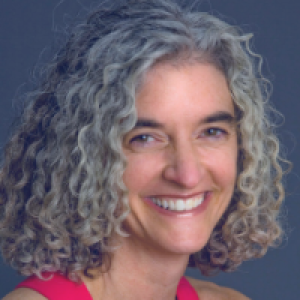
Friday Sep 21, 2018
Friday Sep 21, 2018
The pelvic floor is literally our foundation, says yoga therapist Leslie Howard in this free download. It forms the bottom of the core musculature, and it plays an important role in our overall postural and functional health. When the pelvic floor is not working probably, our true foundation is not supporting us throughout the day.
Unfortunately, as we get older, the muscles of the pelvic floor get weaker, and as a result, disorders related to the pelvic floor become increasingly common, including incontinence, prolapse, pelvic pain, and much more. Generally most people think that pelvic floor issues arise when the pelvic floor muscles get too lax. But pelvic floor muscles can also be too tight, causing another, but related set of problems as weak pelvic floor muscles. Leslie talks about why Kegel exercises often are done wrong and, as a result, can be counterproductive.
She discusses common pelvic floor issues resulting from loss of muscle tone or excessive tightness, and the role of yoga in addressing these imbalances. In the general public, incontinence is the most common issue; 38 percent of women and 17 percent of men suffer from different types of incontinence. Leslie further discusses other common pelvic floor issues like pelvic pain and prolapse.
She also shares results from recent research on the benefits of yoga for incontinence based on a protocol of yoga practices she and Judith Hanson Lasater created together, and discusses which typs of yoga poses are best suited for different types of pelvic floor problems.
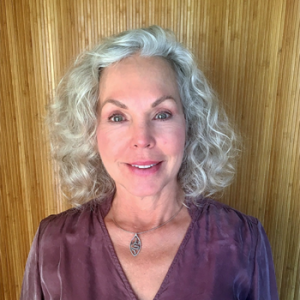
Friday Sep 07, 2018
Friday Sep 07, 2018
According to recent data, approximately 21.5 million American adults (aged 12 and older) have battled a Substance Abuse Disorder (SUD) within the past two years. The devastating effects of these complicated diseases touch individuals, families, communities and society as a whole.
The road to recovery can be slow, difficult, and uncomfortable. The good news is that Yoga is increasingly being recognized by treatment professionals as an effective and empowering part of a whole-person healing strategy.
In this free download, Celeste Mendelsohn, a certified Yoga Therapist who works with people in recovery from SUDs, discusses some of the challenges of recovery and how yoga can help and ease symptoms and promote healing at each stage of the process. She also describes her approach, in which she merges the wisdom of ancient yogic philosophies with more modern approaches, such as 12-step programs.
Celeste points out that in addition to a wide spectrum of techniques, whether movement, breath-based, or more inner-focused practices, weaving together ancient yogic philosophies, such as the system of restraints and practices called the Yamas and Niyamas, with the modern language of recovery can contribute to a powerful, healing experience.

Tuesday Aug 28, 2018
Healing Pain: The Asana Breath Core Nexus with Robin Rothenberg
Tuesday Aug 28, 2018
Tuesday Aug 28, 2018
Do you suffer from neck or shoulder tension? If so, you’re not alone. Chronic neck and shoulder pain affect millions of people, notes yoga therapist Robin Rothenberg, founder of Essential Yoga Therapy in this free download. And it’s not just an issue of chronic pain. It can also affect us systemically in terms of lower energy and reduced well-being.
Oftentimes, the problem may not really originate in the muscles of the neck and shoulders. Rather, what is most commonly at issue is loss of integration between the abdominal core and what Robin refers to as the mid-back core.
The center point of the body is the lower ribcage and the diaphragm, notes Robin. The upper and lower part of the body are linked through what Anatomy Trains author Tom Myers refers to as the deep front line, i.e. the deep inner core line that starts from the inner arches and runs up through the pelvic floor, the iliopsoas, the transverse abdominis, and into the diaphragm, and pericardium.
The deep core line is similar to what the ancient yogis referred to as the Bandhas. With neck and shoulder problems, issues with the muscles involved in Jalandhara Bandha are often involved. To have a healthy yoga practice, it is important that we include that essential understanding of how to stabilize first and mobilize from that very strong stable center.
Robin Rothenberg has been teaching yoga therapeutically for more than thirty years. She specializes in utilizing adaptive asana and breathing practices to break chronic pain patterns and reset the body to move with greater stability and freedom.
Increasingly, Robin notes, she has become aware of the key role that breathing plays in musculoskeletal issues.
“Functional breathing and functional movement go together,” Robin explains. “Functional breathing is very much about the core being engaged appropriately so that the abdominals are always sinking and oscillating with the diaphragm.”
When we sit in our computer slumped position, we effectively cut off the abdominals from the diaphragm so the abdominals become flaccid. As a result, the diaphragm is no longer doing what it needs to do to breathe well.
Once this happens, the accessory muscles of the chest start to be used as primary breathers; people breathe up instead of out. When we do this 20,000-30,000 times a day (which is how many times we breathe), the result is a tremendous strain on the musculature in the neck and shoulders.
This in turn creates chronic tension all the way up through the jaw. That can create headache and tension in the head, TMD, joint pain, tension in the eyes. We’re not getting the full range of the diaphragm, which means our Prana is affected, because we cannot breathe effectively and fully in that slumped position.
Robin further goes into detail of why the newest trend in rehabilitation science is to look at the breath as a possible precursor to chronic musculoskeletal pain. It is important for yoga teachers that we really get people breathing functionally, she notes. We need to use asana practices to help people to sync the diaphragm back up with the abdominals to alleviate upper back and neck and shoulder tension and to stabilize and support the lower back.
Yoga offers a wonderful tool for fostering asana-breath integration and greater mindful awareness. This can be an amazing tool for transformation, if yoga teachers have the education and training to know how to do it effectively.
